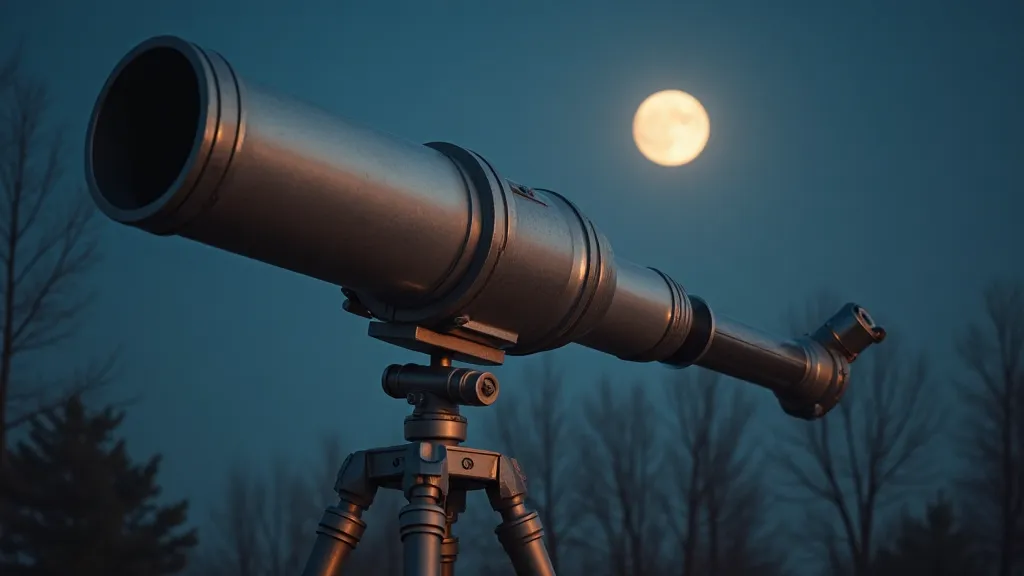The Telescope's Gaze: More Than Just Optics – The Psychology of Observation
There's a particular feeling that washes over you when you first point a telescope towards the night sky. It's not just the visual spectacle – the swirling nebulae, the crisp rings of Saturn, the myriad of star clusters blossoming across the inky blackness. It's something deeper, a primal stirring of the soul that transcends mere observation. It’s a connection to something vast, ancient, and profoundly humbling. This feeling, this shift in perspective, is as much a product of the instrument itself as it is the human mind interpreting what it sees. Think of it, in a way, like the feeling you get when encountering an antique accordion.
I remember the first time I saw an accordion – not through a telescope, but in a dusty antique shop. It was a Hohner Victoria, its bellows worn, its keys slightly yellowed, a patina of age clinging to its every contour. There was an undeniable sadness emanating from it, a silent testament to countless hands that had squeezed its buttons, breathed into its reeds, and coaxed melodies from its heart. It wasn’t just an instrument; it was a vessel of memories, a tangible link to generations past. Just as that accordion held the echoes of laughter and perhaps sorrow, a telescope holds the echoes of light—photons that have traveled for eons to reach our eyes.

A History Etched in Light
Telescopes, like accordions, are testaments to human ingenuity and a relentless desire to understand the world around us. Galileo's pioneering work wasn’s simply about looking at Jupiter’s moons; it was a philosophical earthquake that shattered geocentric dogma and initiated a new era of scientific inquiry. His simple refracting telescope—a tube with lenses—became a powerful symbol of this intellectual revolution. Later, Newton's reflecting telescope, with its mirrors, offered a different approach, pushing the boundaries of what could be observed. These weren’t just tools for seeing further; they were instruments of profound societal change, catalysts for questioning established truths. Just as the craftsmanship of a well-made accordion speaks to the skill of the builder, the precision optics of a telescope speaks to the dedication of its makers.
Specific Telescope Types & Their Unique Gaze
Choosing a telescope isn't merely about aperture or focal length; it’s about aligning your observational goals with the instrument’s strengths. A Dobsonian reflector, for example, with its large aperture and simple design, offers an unparalleled view of deep-sky objects – those faint, distant galaxies and nebulae that paint the cosmos with vibrant hues. It's a more visceral experience, demanding you learn the sky and navigate using star charts. The direct connection to the sky, the lack of complex mechanics, feels almost ancient, akin to the feeling of mastering the nuances of an antique bellows system on an accordion.
Refracting telescopes, on the other hand, offer sharp, high-contrast views of planets and the Moon. Their sealed tube construction minimizes atmospheric turbulence and provides a stable platform for detailed observation. These are meticulous instruments, reflecting a craftsman’s desire for precision and refinement. They feel more "finished" than a Dobsonian, much like a beautifully restored accordion, all its intricacies brought back to life.
Catadioptric telescopes – like Schmidt-Cassegrains and Maksutov-Cassegrains – offer a compromise, combining the advantages of both reflectors and refractors. They're compact, versatile, and provide excellent views across a wide range of celestial objects. They represent the pinnacle of engineering, a marriage of aesthetics and functionality.

The Psychology of Perspective
Observing the cosmos through a telescope isn’s just a visual experience; it’s an emotional one. The sheer scale of the universe dwarfs our everyday concerns, putting our lives into a cosmic context. It’s a humbling perspective, yet also incredibly liberating. We are, after all, made of stardust, connected to everything that exists. This realization can evoke a profound sense of wonder and a renewed appreciation for the fragility and beauty of life on Earth.
There's a meditative quality to observing the night sky. The quiet stillness, the vast emptiness, allows for a deep sense of introspection. It's a chance to disconnect from the noise and distractions of modern life and reconnect with something fundamental—our place in the grand tapestry of the universe. It’s a parallel to the focused energy required to restore an old accordion—a slow, deliberate process that demands patience and attention to detail, rewarding you with a deeper appreciation for the object’s history and inherent beauty.
Craftsmanship and Connection
Whether it's a carefully crafted accordion or a precisely engineered telescope, there's a palpable sense of human connection embedded within these objects. They represent the culmination of skills passed down through generations, a testament to the enduring human desire to create and understand. When you hold a telescope, you’re not just holding an instrument; you’re holding a piece of history, a link to the countless individuals who have gazed at the night sky and pondered the mysteries of the universe. Restoring an antique accordion allows you to become a part of that story, to breathe new life into a silent legacy.
And just as the gentle sigh of an accordion’s bellows evokes a sense of longing and nostalgia, the light gathered by a telescope carries the whispers of distant stars, inviting us to listen to the universe’s song.






